BlackBerry Torch 9800 Review: Keeping RIM's Flame Alive
by Brian Klug on September 1, 2010 7:00 AM EST- Posted in
- Smartphones
- Torch
- BlackBerry
- Mobile
Keyboards - Virtual or Physical
I talked about the keyboard a bit on the Torch, and it’s every bit as good as older BlackBerry keyboards. It isn’t identical, but comes close. What’s different about the Torch keyboard is that there’s considerably less up, down, left, right movement to the keys than on older BlackBerry keyboards, no doubt due to the constrained space. The keys themselves are very much held in place and don’t wiggle on their domes, and have a resounding click when pressed. There’s a tiny bit of keyboard flex, but nothing bothersome.
The backlighting is also there, and uniform as it should be. There’s no dimming or falloff notable to the left or right across the keyboard like I’ve seen on a few other backlit physical keyboards.
Virtual Keyboards
The real story is with BlackBerry 6's virtual keyboards. Whenever the keyboard tray is closed, and you’re in a text field, the virtual keyboard will pop up. There’s one for portrait, and one for landscape. Both are full QWERTY, but arranged in a relatively basic rectangular layout.
There’s also a reduced QWERTY version that joins adjacent keys, and a multi-tap version that's a throwback to tapping on numeric keypad characters multiple times to select letters. Technically you get three keyboards, but really only two of them are something sane people would ever use.
By default, the full QWERTY keyboard ships with all the assist settings turned off, and the reduced keyboard simply offers predictive intelligence. However, BlackBerry actually offers three modes of operation for the full keyboard - direct, predictive, and corrective. The names are pretty self explanatory. In direct mode, you get exactly what you type - there’s no assistance if you make a misspelling, or if you’re going fast and screw up. You get what you type. In predictive mode, the software will try and figure out what you’re trying to type and offer suggestions, and in corrective, you get iOS-like assistance when misspelling things. It isn’t perfect, and it still isn’t quite iOS level, but it isn’t bad.

BlackBerry also gives a huge suite of options for correction assistance settings, from whether the software is allowed to learn your, uh, unique diction from emails and messages (essentially swearing mode), to whether the suggestions should be context aware. Honestly, I think BlackBerry has provided more configuration settings for typing assistance on OS 6 than the stock Android keyboard, and certainly more than the virtually secret inner workings of iOS’.
Though it’s obvious that RIM put a lot of effort into the virtual keyboard, it still doesn’t feel polished enough that anyone should use it over the physical keyboard. It’s great to the extent that you can quickly type a URL with it - if you’re really so lazy that you can’t be bothered to slide out the keyboard - but I’m left wondering where outside of landscape anyone would use the virtual keyboard by choice.
The most notable flaw with the virtual keyboard is actually the placement of keys, which I already mentioned seems uninspired. It’s rectangular, not offset like virtually every usable virtual keyboard on the market. Android does it, iOS does it - RIM should have.
The other notable problem is the placement of the send key when you’re composing an SMS or BBM message. It’s right next to the delete key, and super easy to press on accident. See the photo down below - it's the one outlined in green, and the symbol inside changes depending on what context you're in. Worse, since you’re probably reaching for the backspace key when you hit it, you’re likely to inadvertently send someone a completely nonsensical message. I’ve had that happen almost every time I’ve used the virtual keyboard to compose an SMS or BBM.
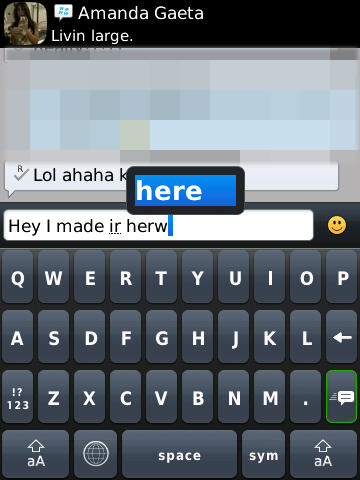
It’s obvious that there was a lot of thought put into the predictive backend of the virtual keyboard input system, but not much into the actual front facing layout. It’s interesting that the Storm 2 isn’t among the devices slated for an eventual update to BB OS 6, given how close the virtual keyboard solutions are to being livable.
At the end of the day, the good physical keyboard on the Torch is what you should be using almost exclusively. Though the virtual keyboard is more than enough for casually entering web addresses, it just isn’t good enough for people that are messaging focused.



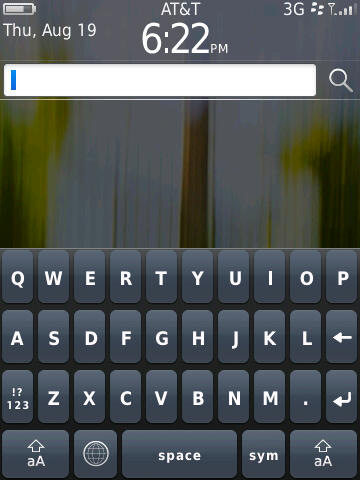
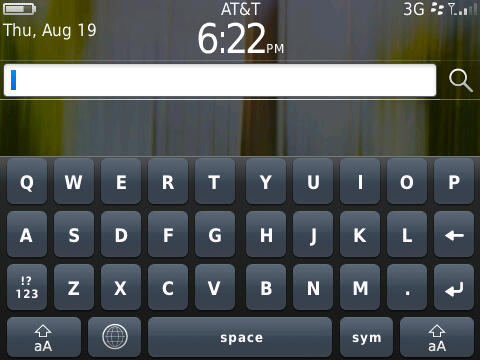
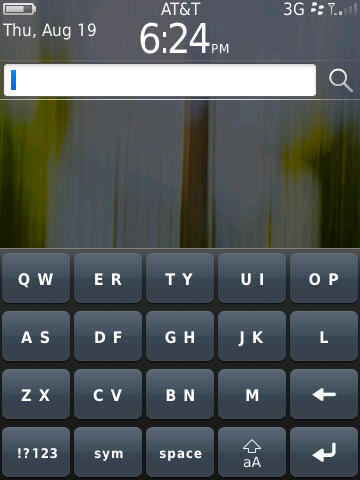
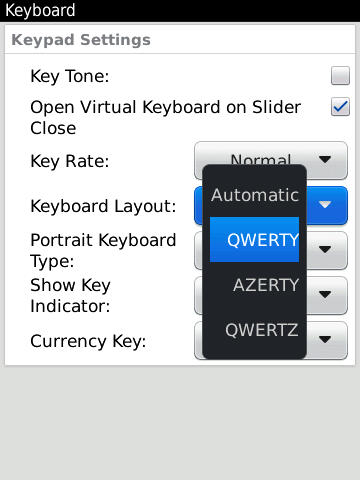








41 Comments
View All Comments
tipoo - Sunday, November 28, 2010 - link
Interesting to note that the Marvell Tavor PXA930 has a maximum reccommended clock speed of 800MHz, 200MHz higher than whats in the Torch/Bold. Odd that they aren't using it to capacity.